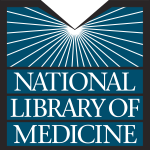- Industry: Library & information science
- Number of terms: 152252
- Number of blossaries: 0
- Company Profile:
The National Library of Medicine (NLM), on the campus of the National Institutes of Health in Bethesda, Maryland, is the world's largest medical library. The Library collects materials and provides information and research services in all areas of biomedicine and health care.
Removal, usually from the aqueous phase, of a test substance in the presence of living organisms by biological processes supplemented by physico-chemical reactions.
Industry:Biology; Chemistry
Mean concentration of a substance in the critical organ at the time the substance reaches its critical concentration in the most sensitive type of cell in the organ.
Industry:Biology; Chemistry
Ratio of the amount of substance adsorbed at the interface of a condensed and a liquid or gaseous phase to the total amount of the substance available for adsorption.
Industry:Biology; Chemistry
Liability of members of the general public to come in contact with substances arising from operations or processes carried out by other individuals in their vicinity.
Industry:Biology; Chemistry
1. Adverse effects following chronic exposure.
2. Effects which persist over a long period of time whether or not they occur immediately upon exposure or are delayed.
Industry:Biology; Chemistry
1. Adverse effects following chronic exposure.
2. Effects which persist over a long period of time whether or not they occur immediately upon exposure or are delayed.
Industry:Biology; Chemistry
Substance that blocks the transport or use of oxygen by living organisms.
Note: Examples include both physical (nitrogen gas) and chemical (carbon monoxide) asphyxiants.
Industry:Biology; Chemistry
Movement of a substance across a cell membrane against an electrochemical gradient, in the direction opposite to normal diffusion and requiring the expenditure of energy.
Industry:Biology; Chemistry
Organ which first attains the critical concentration of a substance and exhibits the critical effect under specified circumstances of exposure and for a given population.
Industry:Biology; Chemistry
Pathological condition in which the hydrogen(1+) (hydron) amount concentration of body fluids is above normal and hence the pH of blood falls below the reference interval.
Industry:Biology; Chemistry
